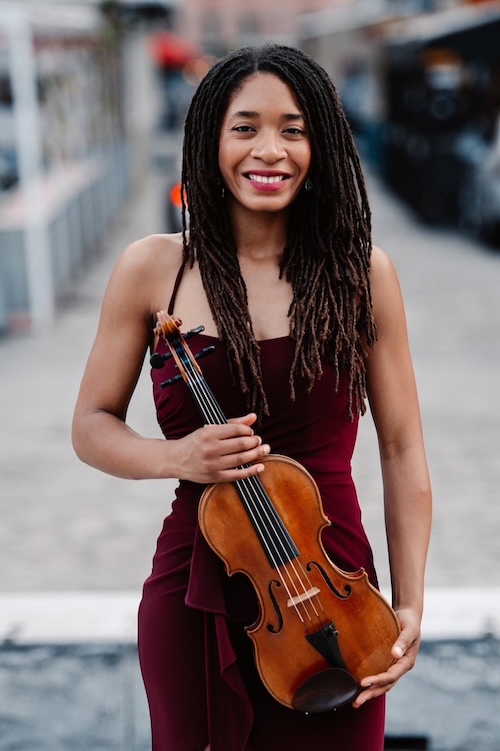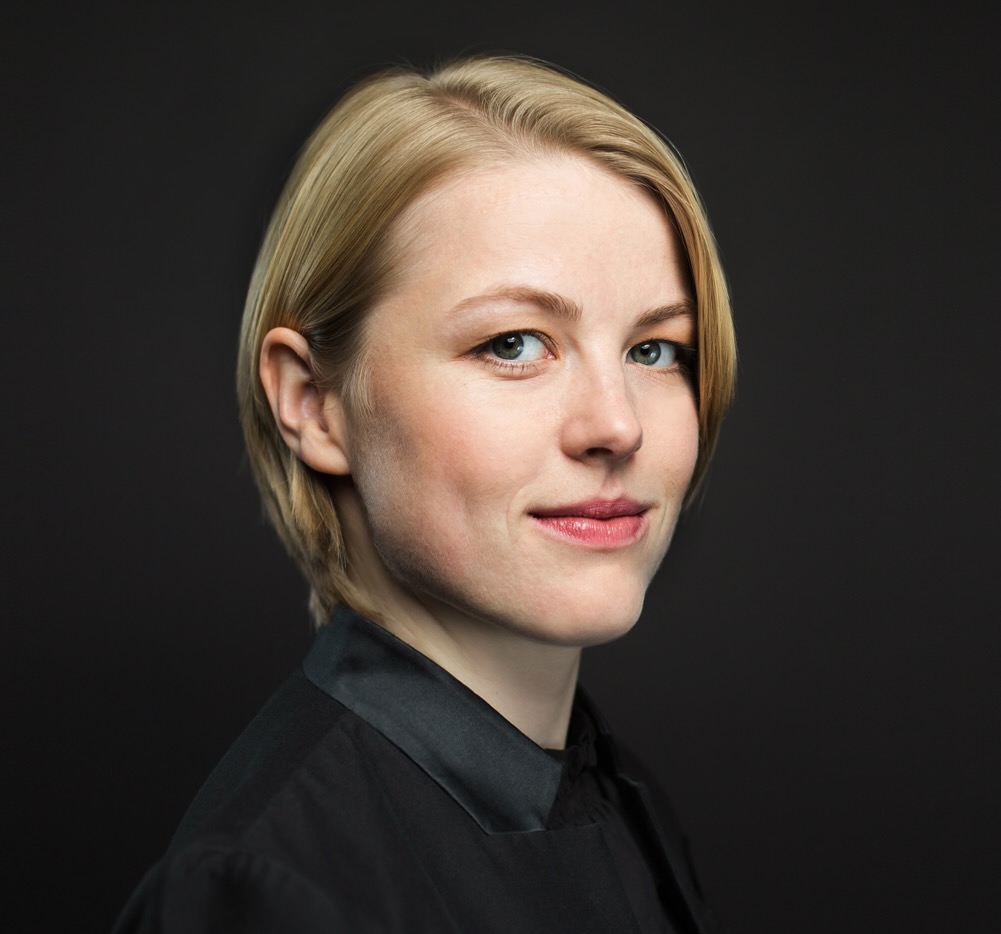Grevious provides inspired advocacy for Coleridge-Taylor concerto at Wolf Trap

Njioma Grevious performed Samuel Coleridge-Taylor’s Violin Concerto with the National Symphony Orchestra Friday night at Wolf Trap.
You take your chances when presenting a concert that’s open to the elements, and steady rain provided an aural backdrop for much of the National Symphony Orchestra’s performance at Wolf Trap’s Filene Center Friday night — a balm for the D.C. area’s drought, but an endurance test for those watching from the lawn.
Those who secured seats under the roof, or who braved the precipitation, got to hear Njioma Grevious’s dazzling performance of Samuel Coleridge-Taylor’s Violin Concerto, as well as an uneven rendition of Ludwig van Beethoven’s Ninth Symphony under the baton of guest conductor Ruth Reinhardt.
Coleridge-Taylor wrote his Concerto in G minor at the behest of Maud Powell, the pioneering American violinist, who premiered it in 1912. The concerto ended up being the last orchestral work he would write before his untimely death the same year at the age of 37 from pneumonia.
Coleridge-Taylor’s ancestors on his father’s side were African-Americans who had been freed from bondage by the British at the end of the Revolutionary War, and he had a deep interest in what was then called “Negro music,” setting many such melodies in classical garb. His Violin Concerto boasts a bevy of appealing original tunes, some with touches of spiritual harmonies, like the harmonization of the march theme that opens the first movement. The connective tissue between these appealing themes, however, sometimes feels thin; the concerto depends on an inspired soloist to carry it.
Grevious won the Sphinx Competition last year playing the Coleridge-Taylor concerto, and on Friday she presented it like someone who has told a great story many times and can’t wait to tell it again.
Every detail sounded spontaneous yet thoroughly considered, like the way she subtly emphasized the blue notes when she took up the march theme. She inflected every line to lead seamlessly into the next; she pulled an array of dazzling colors from her violin, from dusky low notes to silvery threads in higher registers; she made sure the virtuoso figuration served the music, and not the other way around. Her first-movement cadenza seemed to stop time both with its violin pyrotechnics and with its sheer intensity. In short, she sounded like a star on Friday.
Reinhardt led the NSO in providing sensitive support, particularly in the slow movement, which opens with an aching, sweet theme in the orchestral strings that Grevious took up gently, like receiving a precious gift. Later, Grevious played a quiet sustained note and the orchestral strings took up a similarly affecting melody behind her, with Reinhardt ensuring that both lines could be heard.
The finale begins with a jubilant dance that both soloist and orchestra seemed to relish. Later, Coleridge-Taylor brings in the themes of the first movement for no musically obvious reason, but in a performance like this, it was great to hear them again.

Ruth Reinhardt conducted the National Symphony Orchestra in Beethoven’s Symphony No. 9 Friday night at Wolf Trap. Photo; Jessica Schafer
Beethoven’s Ninth following a substantial concerto made for a long night. Under Reinhardt, the NSO zipped through the symphony in just over an hour, starting with a brisk first movement that seemed to miss some of the primordial mystery in the open fifths. After a choppy Scherzo, Reinhardt and the orchestra seemed to settle in during the Adagio molto e cantabile, with a quick pace that still felt supple in the melodic lines; the NSO’s winds especially shone here.
Of course, the Ninth’s finale sweeps all before it away, and this one had some compelling moments. The NSO’s cellos and basses sounded stentorian in their recitative and made a rapt murmur in their first statement of the “Ode to Joy” theme, with the rest of the orchestra matching their vitality. The Cathedral Choral Society made all of Beethoven’s challenging choral writing sound musical; the men’s initial intonation of “Seid umschlungen, Millionen” had a thrilling bite and heft, and one could hear every line of the double fugue later in the movement as it exploded with energy. (Disappointingly, the program did not include the text for the finale, so those who didn’t come prepared remained in the dark.)
The soloists, drawn from the Wolf Trap Opera program, had mixed success. Baritone Blake Denson’s voice sounded tight in his initial solo, although it seemed to warm up as the movement went on. Tenor Ricardo Garcia was formidable in the “Turkish March” solo. Soprano Keely Futterer and mezzo Gabrielle Beteag were often barely audible, perhaps due in part to their placement between the orchestra and chorus. Still, the orchestra and chorus under Reinhardt carried things to a rousing conclusion.
The National Symphony Orchestra performs Puccini’s La bohème with Wolf Trap Opera at the Filene Center on July 19. wolftrap.org

